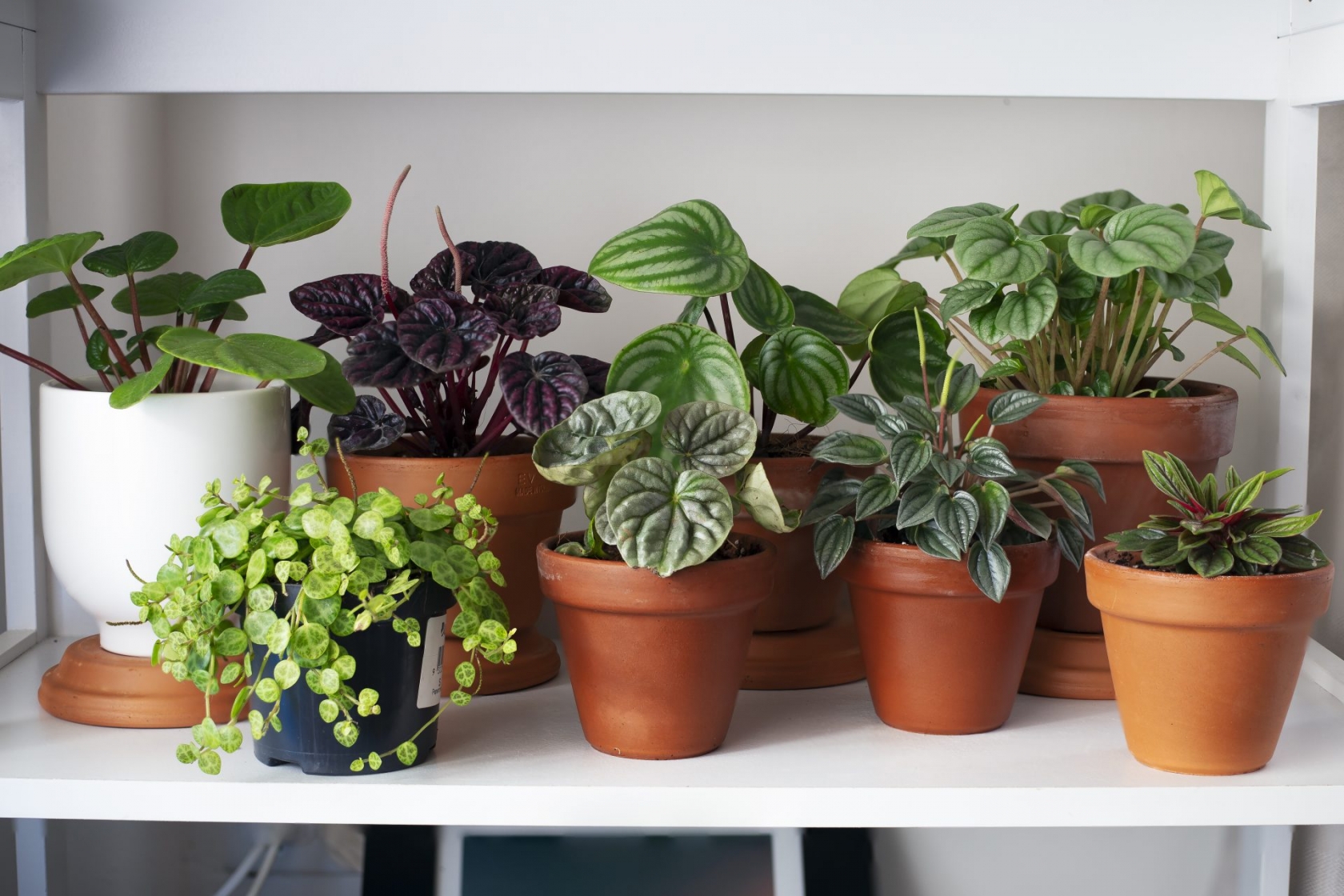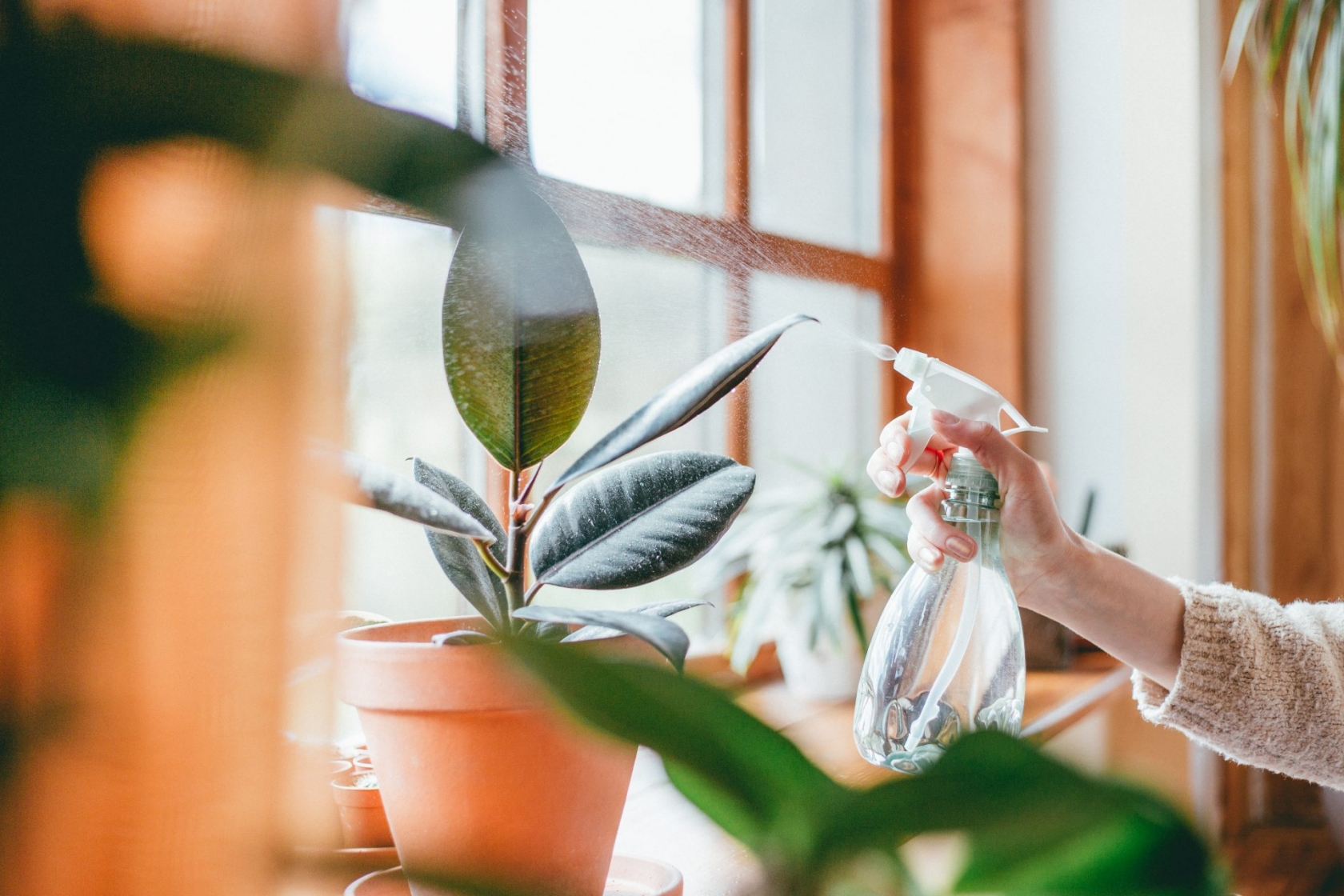Are your plant’s leaves turning dry and crispy? It could be suffering from low humidity – here’s how misting could help.
Taking care of houseplants can sometimes feel like a bit of a guessing game. It’s a well-known fact that plants need a combination of light and water to survive, but beyond that, things can get a little more confusing – especially when it comes to the extra steps you can take to ensure your plants are thriving, compared to just surviving.
One such step is ensuring your plant’s environment is humid enough. While some houseplants – like cacti and succulents – originate from drier climates, many come from tropical environments, where the weather is warm and humid.
And while it’s unlikely that doing nothing to address the humidity in your plant’s environment will kill them (although it can cause problems for your plant’s health), taking steps to boost humidity levels around your plant can make a big difference to the plant’s appearance and growth rate.
The most commonly suggested way to boost the humidity of a plant’s environment is through misting. If you’ve taken a wander around a plant shop before, chances are you’ll have seen a misting bottle or two – they’re simple spray bottles which, when filled with water, cast thin droplets over the plant’s leaves and stem. However, while some plant experts swear by misting, others believe there are more effective ways to boost humidity.
So, is misting worth it? And what are the potential benefits of boosting humidity in the first place? We asked Charlotte Hosking, plant doctor at Pointless Plants and Patch Plant Doctors Richard Hull and Richard Cheshire for their advice. Here’s what they had to say.
Why is humidity so important for plants?
As we’ve already mentioned, many of today’s most popular houseplants originate from tropical environments. Because of this, these plants are typically receptive to high levels of humidity – making it an important factor in your plant care routine.
“Keeping the air sufficiently humid isn’t very difficult and you’ll notice a big difference in your plants’ health,” Hull and Cheshire explain.
Because plants can absorb and release water through their leaves, low humidity levels can cause water from inside the plant to evaporate outwards into the environment, causing the leaves to dry up around the edges. In this way, high humidity levels stop this evaporation from happening, as there’s already moisture in the environment.
What problems can low humidity cause?
As Hull and Cheshire have already mentioned, one of the main problems caused by low humidity is dry and crispy leaves. “If the air gets too dry, you may notice the edge of your plant’s leaves turning brown and crispy,” they explain. “It can be especially noticeable on ferns or palms, which have finer leaves.”
Hull and Cheshire continue: “A plant that’s well-watered but not misted probably won’t die, but it will likely look quite sad.”
Keeping your plant’s leaves lush and hydrated can also help to keep pests such as spider mites away, as they prefer to feed on plants that have dry foliage.
What are the benefits of misting?
First and foremost, misting can be an effective and easy way to boost the humidity levels around your plants in the short term.
Just make sure you check whether your plant is tropical (and what level of humidity it needs to thrive) before getting started, as some plants don’t like being misted.
However, boosting humidity isn’t the only reason why misting your plants is such a good idea. To begin with, misting your plants is an effective way to keep your plant’s leaves looking and feeling fresh, which is important for their overall health.
“It’s very important all plants have clean and dust-free leaves so they can breathe properly,” Hoskins explains. “I will spray my plants leaves and then a few minutes later wipe them with a dry cloth.”
Misting your plants can also be an effective way to provide them with extra nutrients. “Once a month (in the growth season only) you can add houseplant fertiliser to the water in your mister which can be sprayed on the leaves for a nutrient boost,” Hoskins suggests.
How often should you mist your plants?
How often you should mist your plants largely depends on what you’re using misting to do. For example, if you’re using misting to clean your plants leaves you can do it once a week, but if you’re using it to boost the humidity of your plant’s environment, you’ll want to do it more frequently.
“Most [tropical plants] will be happy if you spritz them every few days,” Hull and Cheshire explain. “The finer the mist the better. You’re not aiming to visibly wet the leaves.”
That last point is super important. While misting can help your plant’s health by boosting the humidity levels in its environment, like overwatering, overmisting to the point where your plant’s soil and foliage are visibly wet and/or damp can cause problems such as bacteria and mould growth on the leaves, so make sure you don’t take things too far.
What are some other ways to boost humidity?
Although misting is the most commonly suggested way to boost humidity levels around your plants, there are actually many different ways to go about doing so.
Indeed, while some plant experts swear by misting, others, such as Hosking, are less enthusiastic about the benefits of doing so. “[The humidity-related benefits of] misting are very short-lived and it’s not a good solution to keeping the humidity around the plant high,” she says.
So, what else can you do to boost the humidity of your plant’s environment? According to the experts, there are a number of ways to go about it. These include:
Place your plants in the bathroom
As long as they get lots of natural light, placing your plants in your bathroom will ensure they’re treated to bursts of high humidity throughout the day.
Group your plants together
Tropical plants love to be in a humid environment, but they also release humidity into the air, too. By placing them together the moisture they breathe out creates a little humid microclimate.
Position your plant on a tray filled with pebbles and water
It really is as simple as it sounds – simply fill a tray or saucer with some pebbles, pour some water over them and position your plant on top. As the water evaporates it’ll pass through the air around your plant, boosting humidity levels.
Invest in a humidifier
Humidifiers can be expensive (and, according to Hull and Cheshire, are “impractical for most people”), but if you want to ensure your plants are getting the humidity levels they need, this is definitely an option.
New to plant parenthood? Check out Stylist’s guide to buying, styling and caring for plants to get started.
Images: Getty
Source: Read Full Article

